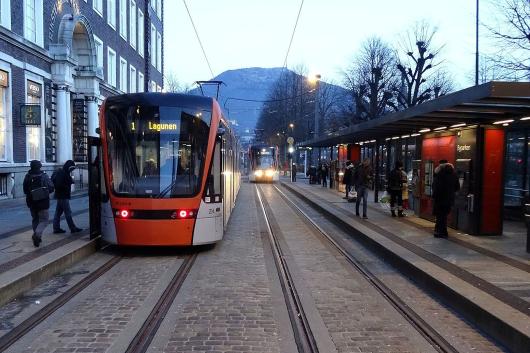
Norway’s National Transport Plan launches a large number of projects and opportunities for Czech companies
24.08.2017 / 15:04 | Aktualizováno: 24.08.2017 / 14:21
(This article expired 01.04.2018 / 02:00.)
The new National Transport Plan is, by far, the largest investment decision of the state in modern history of Norway. It also arrives at the right moment since Norwegian transportation infrastructure has lately been updated only where critical bottlenecks arose. Preference was given to the needs of road users while other constructions were neglected. Except for Oslo and Southern Norway, the railway system lacks the upkeep and capacity that are customary in the 21st century.
The National Transport Plan 2018-2019 (NTP) projects a record-high investment of the state in transportation infrastructure totalling NOK 1,064 bn. The approved investments are allocated as follows: NOK 536 bn. for the road traffic, NOK 319 bn. for railways, NOK 66 bn. for urban transit, NOK 32 bn. for sea transportation, and NOK 4 bn. for air travel.
Road traffic
Out of the total allocation, NOK 217 bn. is designated for construction of new intercity motorways, part of the national motorway network: 290 kms of four-lane motorways and 910 kms of dual carriageways will be built. Further NOK 24 bn. is earmarked for protective constructions against falling stones, avalanches, etc. Remaining funds will be used to improve quality of current roads (e.g. increase of the number of lanes or their width), to enhance road safety (more secure radius of curves, centre-line barriers), and to perform road maintenance more frequently.
Railways
The goal of the NTP is to have the public in metropolitan areas use trains as their primary means of commuting. More frequent train departures and faster connections will be on offer: railway tracks in Oslo area will be reconstructed for a maximum speed of 250 km/h. The secondary effect is to increase the capacity of railways and the network of electric railways so that trains transport more cargo, especially over longer distances.
Full double-track railways should be laid on the Oslo-Skien, Oslo-Lillehammer, Oslo-Fredrikstad-Sarpsborg(-Halden) and Arna-Stangelle segments. Electrification will be performed on the Steinkjer-Trondheim-Storlien segment. More thorough and frequent maintenance and a modern signalisation system (ERTMS) will have effect on all railroads.
Urban transit
According to the NTP, the scope of construction in nine largest cities of Norway will influence 1.2 m. inhabitants, which translates as the biggest construction activity since the introduction of trains to the country in the 19th century. Once finished, a broader range of options for city transit should dramatically decrease the use of cars for individual transport. NOK 24 bn. is earmarked for new cycling tracks and pedestrian ways.
An investment of NOK 17.2 bn. will be used for improving railway tracks and infrastructure in cities. In Oslo alone, a second railway tunnel will traverse the centre, a new light railway to Fornebu will take shape, and a new metro line will be constructed with stations at Bislett, St. Olavs Square, Youngstorget, Grünerløkka and Bryn. The current Oslo S station shall also host a new bus terminal, placed over the roof of the current platforms.
Many other cities will also notice a big construction activity: New railway routings are planned for many locations, and the Bergen light railway will be extended to Fyllingsdalen. In several instances, new railway stations will be built underground (Holmestrand, Larvik). Electric buses should take over in Trondheim city (Super Bus Phase I).
Resume
A decade of large-scale transport constructions in Norway commences. Over the next years, approx. NOK 80 bn. will be used on transport infrastructure in Norway annually; the counties and municipalities will allocate further funds. The big scale of construction activity will necessitate that foreign companies take part in the projects due to lacking capacity of local firms. Czech and other overseas companies, particularly those with previous experience from Scandinavia, will get many opportunities to apply in tenders, published in accordance with the EU/EEA legislation.
Tenders in Norway are announced electronically in Doffin, the national notification database for public procurement, and in the Supplement to the Official Journal of the EU.




